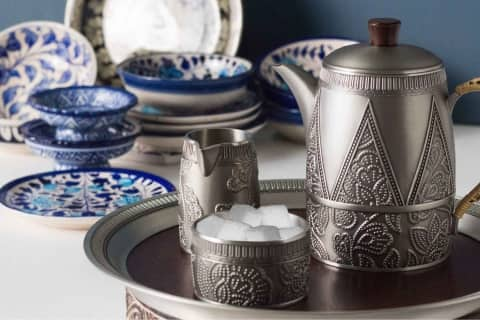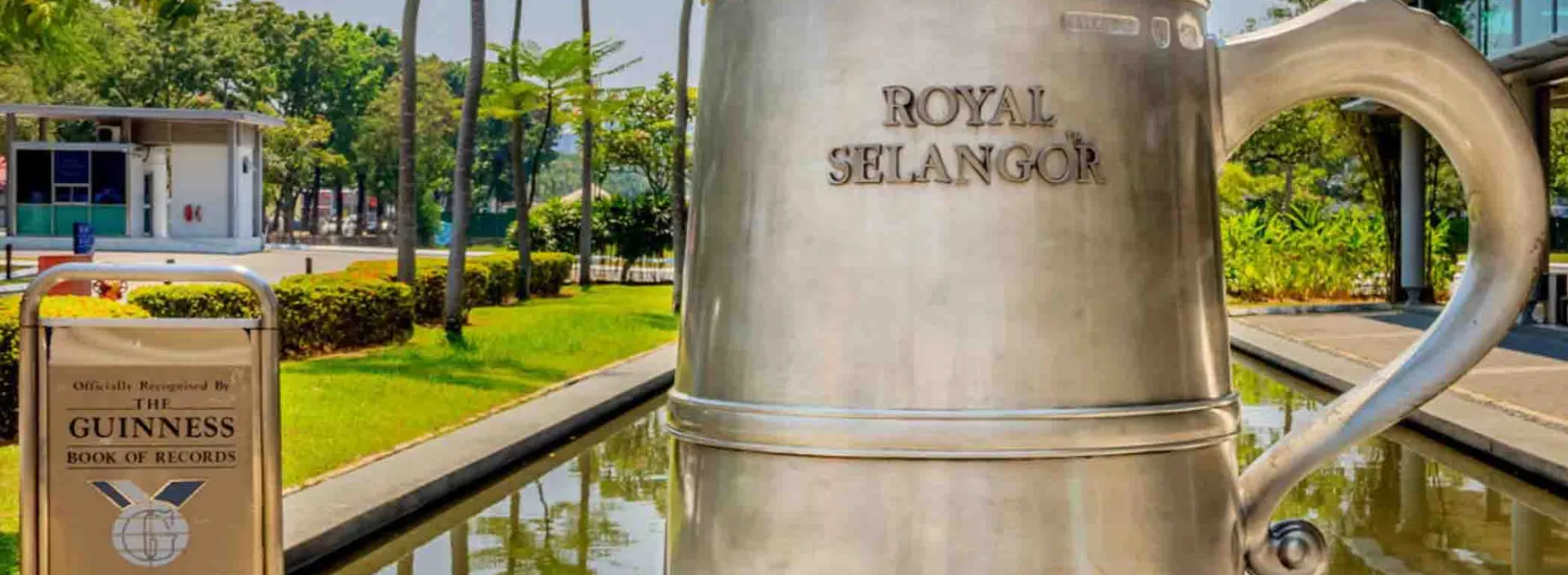OVERVIEW
The Malaysian capital city of Kuala Lumpur has a long history of crafting pewter, one that traces back to the 1800s. One of the biggest players is family-run business Royal Selangor, whose commitment to sustainability of its resources and craftsmanship is keeping this piece of Malaysian heritage alive for generations to come.
- 30/08/2024
- 10 minutes
A Malaysian institution well known for their commercial pewter products, Royal Selangor is in fact a family-run business that started in 1885, and set in the former tin mining and rubber area in Kuala Lumpur’s Setapak district.
These days, Royal Selangor runs its factory with the help of over 200 craftsmen and a team of around 40 designers. It maintains a commitment to sustainability – using responsibly sourced materials including tin and wood, implementing a pewter recycling programme, and preserving traditional pewter-crafting skills. It also ensures a workforce of almost 100% local hires at its production facility, and runs apprenticeship programmes to pass on these traditional skills and preserve an important part of the country’s creativity and heritage.

Tracing roots
The history of pewter in Malaysia ties in with the country’s once thriving tin industry, which traces back to the 1850s when the discovery of tin along the Klang Valley led to the founding of Kuala Lumpur. This brought an influx of Chinese miners in the mid- to late-19th century, who came in their droves seeking a better life.
They included Yong Koon, the founder of Royal Selangor, who started a small business making household items from tin before moving on to working with pewter – a tin compound hardened with copper and antimony. In doing so, he became one of the first pewter smiths in Kuala Lumpur.
Tin mines provided plenty of raw material for miners and merchants from China, India and Malaysia to set up shop, so Yong Koon and his brothers built a small business, graduating from making simple ceremonial and religious objects to designing vases, beer tankards and other items aimed at a growing Western market.

Pewter in Malaysia
Although not produced in Malaysia until the mid-19th century, pewter was first used in the Bronze Age, and prized for its distinctive properties. It’s malleable, easy to clean and maintain, and long-lasting, making it a sustainable material for households.
The crafting process is essentially the same today as it was in the 19th century – raw tin is first mixed with copper and antimony in a large cauldron or kiln and slowly melted. The molten metal is poured into steel casting moulds and left to cool, before the intricate process of filing, polishing and decorative engraving. Even today, much of this process is still carried out by hand by talented artisans.
At the Visitor Centre next to Royal Selangor’s factory in Kuala Lumpur, guests can learn more about pewter and its historical significance in Malaysia. Tours of the factory floor allow insight into the work of highly trained pewter artisans, while a museum of interactive exhibitions sheds light on the science, history and production. Hands-on workshops also offer the chance to try crafting a pewter dish or creating an accessory from scratch.

Take an exclusive tour to visit the Royal Selangor factory and delve into Malaysia’s heritage and history when you stay at Banyan Tree Kuala Lumpur and Pavillion Hotel Kuala Lumpur, managed by Banyan Tree.
